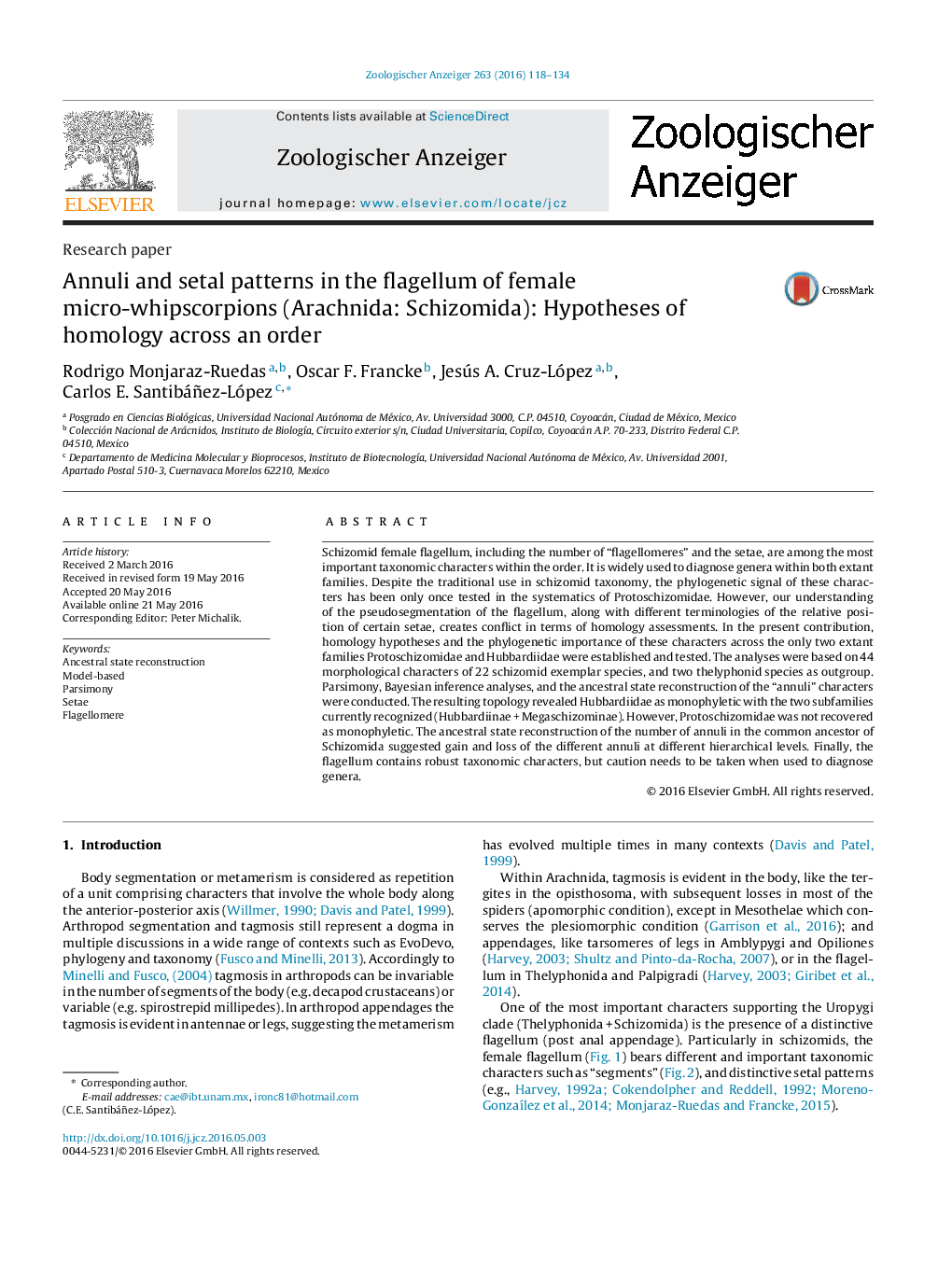| Article ID | Journal | Published Year | Pages | File Type |
|---|---|---|---|---|
| 2790460 | Zoologischer Anzeiger - A Journal of Comparative Zoology | 2016 | 17 Pages |
Schizomid female flagellum, including the number of “flagellomeres” and the setae, are among the most important taxonomic characters within the order. It is widely used to diagnose genera within both extant families. Despite the traditional use in schizomid taxonomy, the phylogenetic signal of these characters has been only once tested in the systematics of Protoschizomidae. However, our understanding of the pseudosegmentation of the flagellum, along with different terminologies of the relative position of certain setae, creates conflict in terms of homology assessments. In the present contribution, homology hypotheses and the phylogenetic importance of these characters across the only two extant families Protoschizomidae and Hubbardiidae were established and tested. The analyses were based on 44 morphological characters of 22 schizomid exemplar species, and two thelyphonid species as outgroup. Parsimony, Bayesian inference analyses, and the ancestral state reconstruction of the “annuli” characters were conducted. The resulting topology revealed Hubbardiidae as monophyletic with the two subfamilies currently recognized (Hubbardiinae + Megaschizominae). However, Protoschizomidae was not recovered as monophyletic. The ancestral state reconstruction of the number of annuli in the common ancestor of Schizomida suggested gain and loss of the different annuli at different hierarchical levels. Finally, the flagellum contains robust taxonomic characters, but caution needs to be taken when used to diagnose genera.
